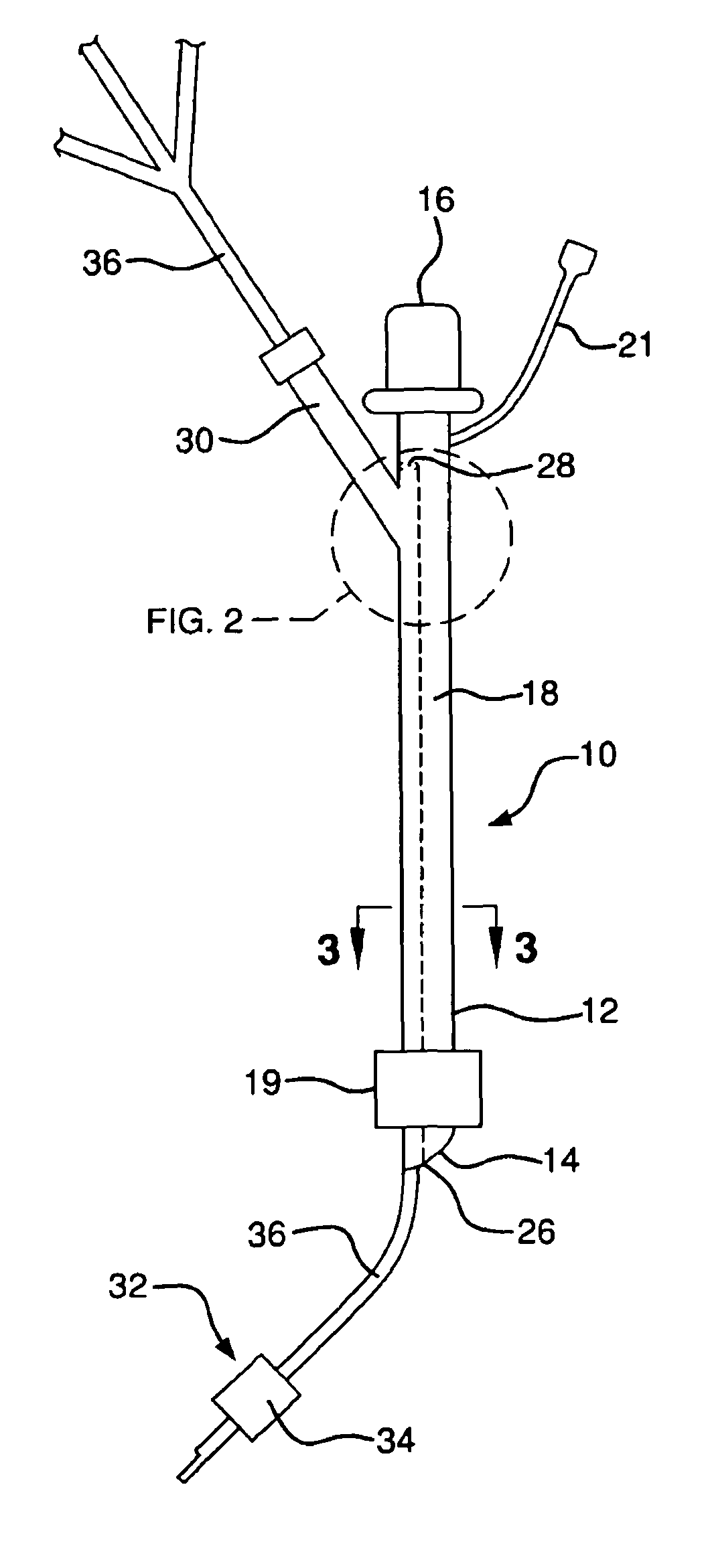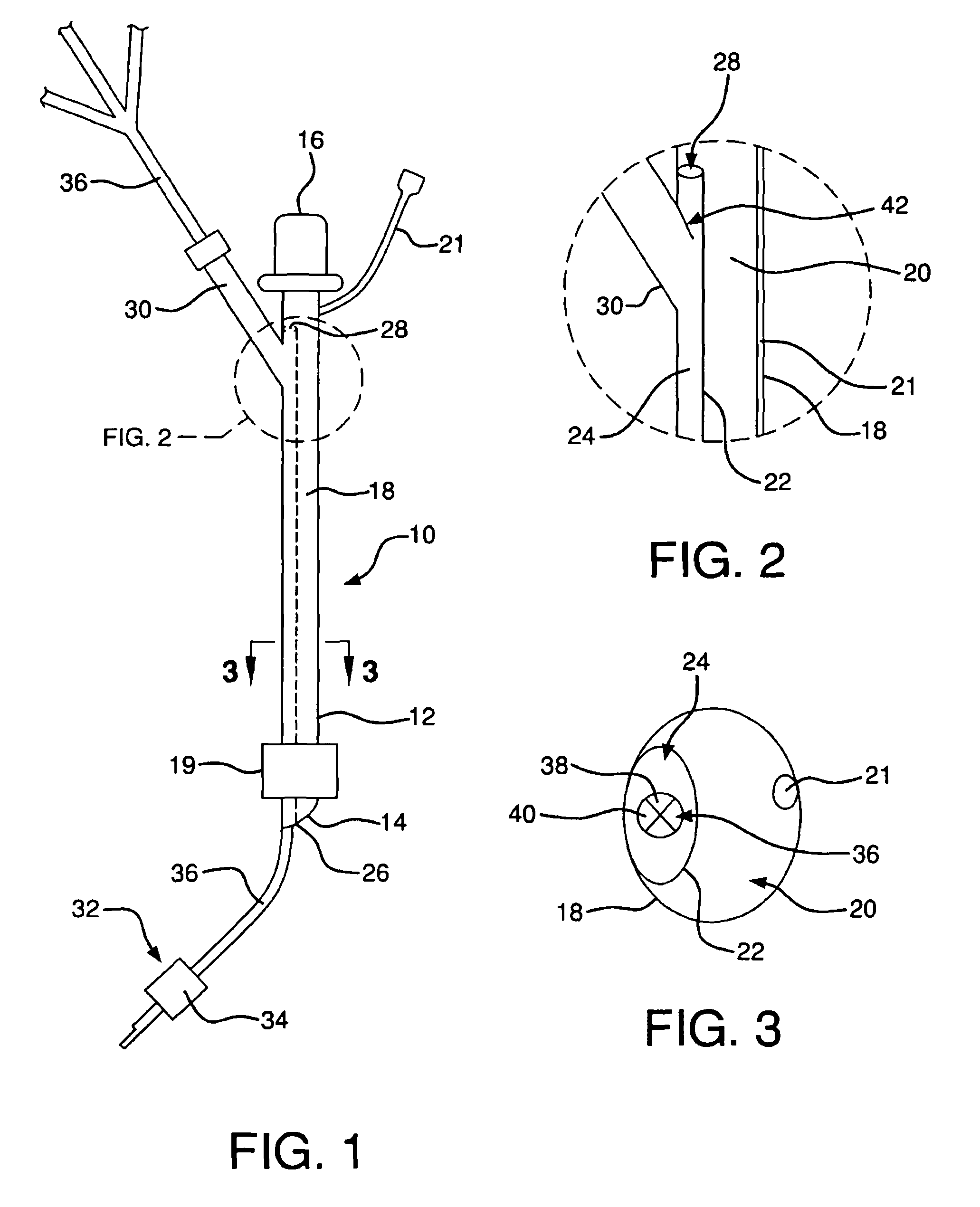Device and method for unilateral lung ventilation
a technology of lung ventilation and device, applied in the field of lung ventilation, can solve the problems of trauma to the epithelial lining of the airway, adversely altering the mechanics, and each tube design has specific limitations
- Summary
- Abstract
- Description
- Claims
- Application Information
AI Technical Summary
Benefits of technology
Problems solved by technology
Method used
Image
Examples
Embodiment Construction
[0015]Referring to the drawings, where like numerals identify like elements, there is shown in FIGS. 1 through 3 a system 10 for unilateral lung ventilation according to an exemplary embodiment of the invention. As described below in greater detail, the system 10 provides for blockage of a non-ventilated lung during ventilation of the other lung while simultaneously permitting delivery of therapeutic agents into the non-ventilated lung via a thermally isolated catheter.
[0016]Referring to FIG. 1, the system 10 includes an endotracheal tube 12 having a distal end 14 and an opposite proximal end 16. The endotracheal tube 12 includes a primary wall 18 defining a main channel 20. The endotracheal tube 12 is adapted for insertion of the distal end 14 of the tube 12 into a patient's trachea via the patient's mouth. Preferably, the primary wall 18 of the endotracheal tube 12 is made from a flexible material in a similar manner as standard endotracheal tubes to facilitate insertion of the tu...
PUM
 Login to View More
Login to View More Abstract
Description
Claims
Application Information
 Login to View More
Login to View More - R&D
- Intellectual Property
- Life Sciences
- Materials
- Tech Scout
- Unparalleled Data Quality
- Higher Quality Content
- 60% Fewer Hallucinations
Browse by: Latest US Patents, China's latest patents, Technical Efficacy Thesaurus, Application Domain, Technology Topic, Popular Technical Reports.
© 2025 PatSnap. All rights reserved.Legal|Privacy policy|Modern Slavery Act Transparency Statement|Sitemap|About US| Contact US: help@patsnap.com


